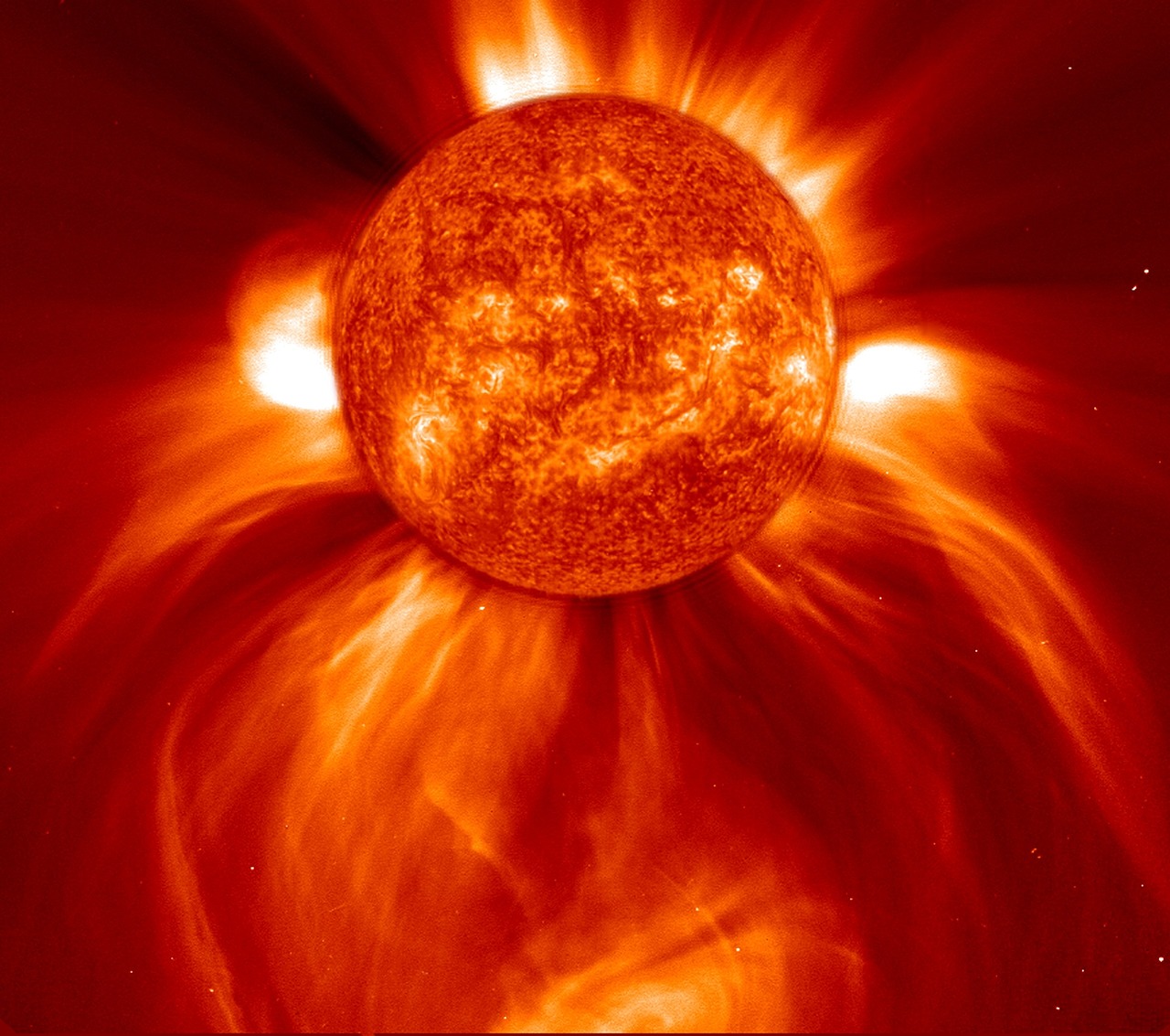The mysterious and active star that is our neighbor in the cosmos and the origin of all life on Earth is known as the Sun. Coronal Mass Ejection (also known as CME) is one of the solar phenomena that it shows signs of exhibiting on a consistent basis. CMEs are enormous clouds of magnetized plasma and solar radiation that move very quickly and can be the cause of geomagnetic storms. These storms can produce fascinating aurora displays even in locations that are a great distance from the Earth’s magnetic poles. Recently, on July 14 and July 15, the Sun displayed a fascinating event including CMEs and their less well-known cousins called “Cannibal CMEs,” providing scientists with an opportunity to explore deeper into solar activity and its potential implications on our world.
A General Explanation of Coronal Mass Ejections
Coronal Mass Ejections are extremely powerful explosions that take place on the surface of the sun. These explosions send billions of tons of electrified gas and magnetic fields hurtling across space at extremely high velocities. These eruptions have the potential to travel across the vast expanse of the solar system and interact with the magnetic field of the Earth, which can then result in geomagnetic storms. The spectacular dance of glimmering lights that can be seen in the polar areas is known as the aurora show, and it is the most stunning effect that these storms have.
The display given by sunspot AR3370 on July 14
Sunspot AR3370 unleashed a coronal mass ejection (CME) and a dark eruption on July 14, demonstrating the immense power of our star. Sunspots are transient patches on the surface of the Sun that experience high levels of magnetic activity, and AR3370 had an especially robust pattern of behavior. It was determined that the CME was of the C-class solar flare category, despite the fact that it had a gigantic size and was traveling very quickly. Solar flares of this class are typically regarded to be too weak to create substantial geomagnetic disturbances on Earth. Nevertheless, the show in and of itself was awe-inspiring, and it offered researchers the chance to investigate the mechanics of these events in greater detail.
The Swift Ejection caused by Sunspot AR3363 on July 15
After the spectacular presentation of AR3370, the Sun had another surprise in store for its viewers on July 15. This time, a second coronal mass ejection (CME) was fired from sunspot AR3363, and it was far quicker than the first one. This CME, just like the one that came before it, was connected with a solar flare of the C class. In spite of the fact that each flare was very mild on its own, the researchers were attracted by the fact that they occurred consecutively. This led them to examine the phenomena further.
The Rare Occurrence of Cannibal Coronal Mass Ejections
There is a rare solar phenomenon known as a cannibal CME, which takes place when multiple coronal mass ejections are exactly aligned with one another and traveling at certain speeds. It is possible that the alignment and coordination of these eruptions will result in a more powerful and concentrated impact on the magnetosphere of Earth. It’s possible that individual solar flares of the C-class don’t represent a major hazard, but the sequential and well-orchestrated nature of Cannibal CMEs makes them interesting enough to warrant research.
The Consequences of This and Where We Go From Here
In spite of the widespread belief that cannibal CMEs are exceedingly rare, there have been multiple instances of these events occurring in recent years. Because of these events, scientists have been forced to reevaluate the dynamics of solar activity and the potential repercussions that this could have on our planet. In addition, the finding of Cannibal Coronal Mass Ejections (CMEs) has generated discussions about the likelihood of an earlier and more powerful solar maximum. A solar maximum is a phase in the solar cycle during which solar activity is at its highest point.
Because of the strong solar activity that occurs during the solar maximum, the frequency of geomagnetic storms can increase, which has repercussions for the technological infrastructure that supports life on Earth. These storms have the potential to disrupt important systems that rely on electromagnetic conditions remaining constant, such as power grids, satellite communications, and other networks. It is possible that gaining an understanding of the frequency of occurrence and behavior of Cannibal Coronal Mass Ejections (CMEs) would provide crucial information that can be used for anticipating and minimizing the effects of future solar activity.
Conclusion
The spectacular exhibition of Cannibal Coronal Mass Ejections (CMEs) that took place on July 14 and 15 has once again pushed the interesting dynamics of the Sun to the forefront of scientific curiosity. Because researchers are delving deeper into the secrets of these uncommon solar occurrences, we are gaining a greater knowledge of the behavior of our Sun and the potential implications it could have on our world. The study of CMEs, in particular cannibal CMEs, takes on a new level of importance in light of the prospect of an earlier and more intense solar maximum. Even as we travel further and further into space, there is one thing that we can be confident of: the Sun never ceases to amaze and captivate us with the wondrous displays of cosmic power that it puts on.
![]()
